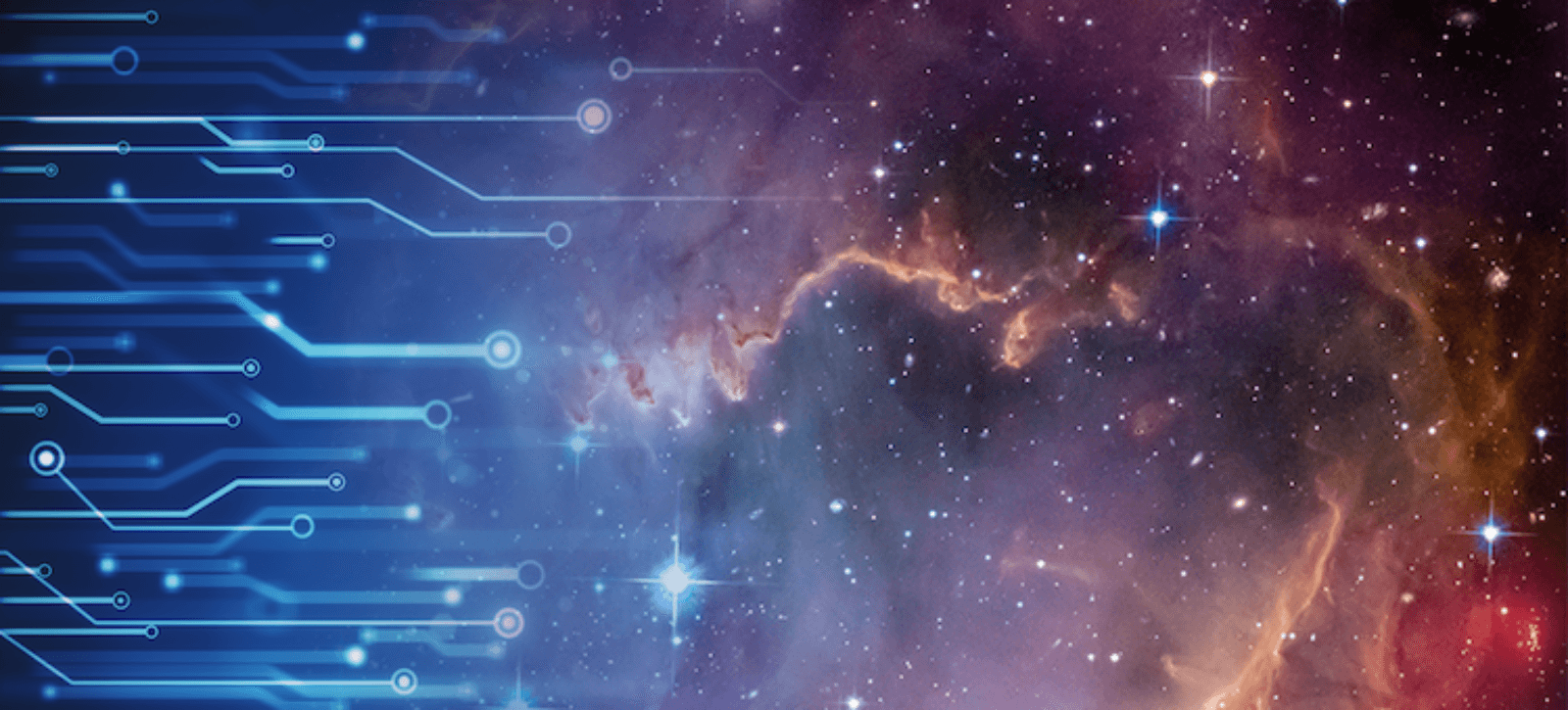Dark Emulator
by Adam Hadhazy
A supercomputer infused with artificial intelligence hunts for the universe's "dark" components

The Author
The Researcher
Science has no shortage of mysteries, but if you had to answer which mystery is literally the biggest, it's no contest. Decades of accumulated evidence are telling us that matter—of which all things in our everyday human experience are made—constitutes a measly 5% of the universe's total composition. It seems that an unknown entity that we call dark matter outnumbers "normal" matter by a ratio at least 5:1. This gargantuan sum of dark matter is then dwarfed by another galling phenomenon, dark energy, more than twice over. Add all that darkness up, and 95% of the cosmos appears to be composed of invisible matter and energy that we can scarcely describe.
Researchers the world over are trying to crack the code of dark matter and dark energy through a range of theoretical model building, experiment-running, and observational work. A promising new effort in this regard carries the slightly ominous moniker of the Dark Emulator. It involves a cosmological simulation run on supercomputers. The simulation attempts to construct the universe as we observe it, plugging in the ostensibly right values and quantities for dark matter and dark energy, in order to arrive at a near-perfect cosmic simulacrum.
"The nature of dark matter and dark energy is the biggest problem in cosmology and physics," says Masahiro Takada, who has worked on the Dark Emulator as a Principal Investigator at the Kavli Institute for the Physics and Mathematics of the Universe (Kavli IPMU) at the University of Tokyo. "In order to obtain insights into these dark components, we need to interpret observational data with sufficiently accurate theoretical models that include the influence of dark matter and dark energy on structure formation. The Dark Emulator gives such an accurate theoretical model."
Many such simulations have been run in the past, which have helped constrain the possible properties of the universe's overwhelming dark components. But what sets the Dark Emulator apart is that it is run on the fastest supercomputers ever dedicated to astrophysics. Known as ATERUI and ATERUI II, the latter of these machines is ranked a highly respectable 117th on the famous TOP500 list of the world's fastest computers. Most of those top 500 computers must split duties amongst numerous scientific fields or are used exclusively by governments.
With fantastic computing speeds comes the ability to run many different models in far less time, helping hone the predicted properties for dark matter and dark energy. In turn, highly specific and thus predictive models give observers an ever-sharpening idea of what potential tracers of dark matter and dark energy to look for during their campaigns.
"An output from the Dark Emulator, taking within a second, is equivalent to running a huge simulation of cosmic structure formation [that] typically takes a few days even with a supercomputer," says Takada.
Simulations create virtual universes, or representative portions of them, starting with a particular recipe of cosmic ingredients at the Big Bang 13.8 billion years ago. The computer then reenacts cosmic history, simulating structure formation over the subsequent billions of years as these ingredients physically interact through the forces of nature, chiefly gravity. In these scenarios, dark matter exerts gravitational pull on matter, pooling it together to form the great filaments of galaxies strung across the cosmos we can readily observe over cosmic history. Meanwhile, dark energy instead has a repulsive effect writ large, driving cosmic expansion to accelerate as the eons pass.
The Dark Emulator performs particularly well with regard to some of the finer details of dark matter on galactic scales.
"A unique aspect of the Dark Emulator, compared to other simulation efforts, is to allow for a fast, accurate computation of statistical quantities of 'dark matter halos' in the universe, which are self-gravitating systems and places where galaxies and clusters of galaxies are likely to form," explains Takada.
The Dark Emulator further benefits from applying artificial intelligence when building its virtual universes. Using an approach called machine learning, the Dark Emulator learns from data plugged into it, extrapolating outcomes without having to re-run the entire simulation. The upshot is that the Dark Emulator gets closer to building a complex virtual universe that matches our own. Comparing the results of the Dark Emulator to the three-dimensional distributions of galaxies, along with the light from background galaxies that foreground galaxies warp with their gravity (an effect known as gravitational lensing), the researchers have found strong concordance achieved in just a matter of seconds of computing time, versus days needed for systems without a boost from artificial intelligence
The next steps will be to continue honing the Dark Emulator and use it to highlight, as it were, the dark matter in galaxies, as well as broadly assess dark energy's telltale signatures. "We are now ready to apply the Dark Emulator to extract the information on the dark components from a real galaxy," says Takada.
Before long, the dominant substances in our universe might finally be revealed in all their un-blazing glory.